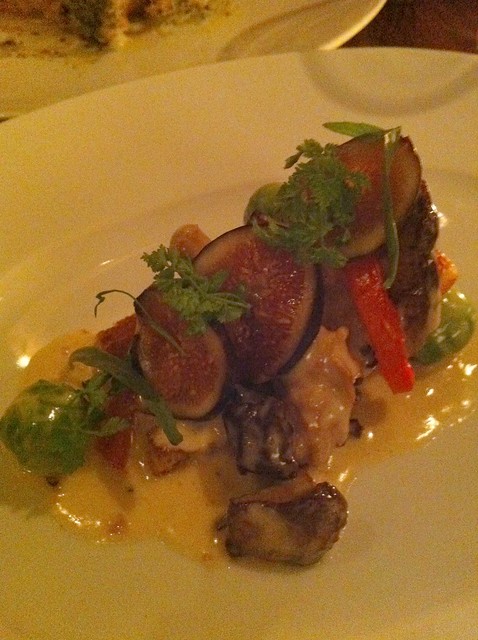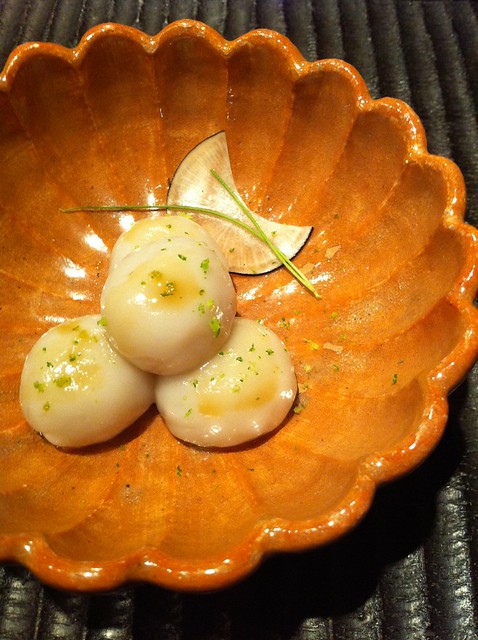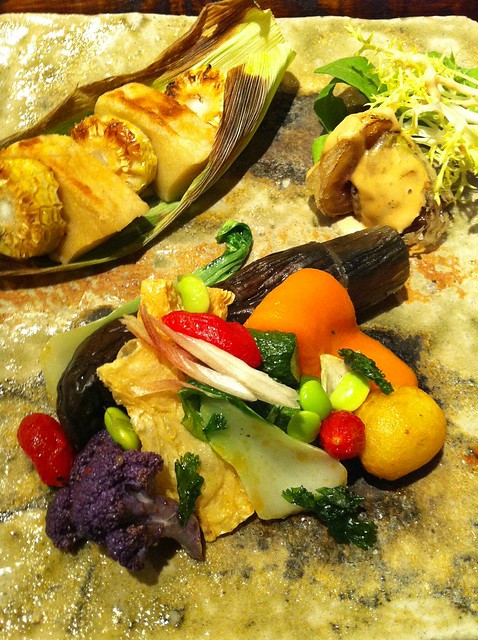After reading about Bon Appétit, a sustainable-minded food catering company based in–of course–California, and its efforts to get even more local by switching the roles of some of their managers and chefs to “foragers”, I immediately thought, Well, they should call Wildman Steve.
I don’t remember how I first heard about Wildman Steve, but I’ve since kept him in the back of my head for when my schedule allowed me to join one of his foraging tours in Central Park. One super humid summer day, me and about fifteen others met in the upper west side of the park to forage for berries and cherries, epazotes and sasafras, and probably the last garlic bulb of spring and the first burdock of fall. The bonus was learning how to spot poison ivy; how amazing it was to see so many all over the park where clueless pedestrians and their pets run around!
Unfortunately, the rest of the summer didn’t allow for much cooking in the kitchen so I wasn’t able to use the produce I took home except for the berries that went into a pint of homemade ice cream, but I did gnaw on all of the stuff the Wildman showed us along the way. I completely trusted that he knew what he was doing and picking. I’m glad to report that there were no weird stomach pains after.
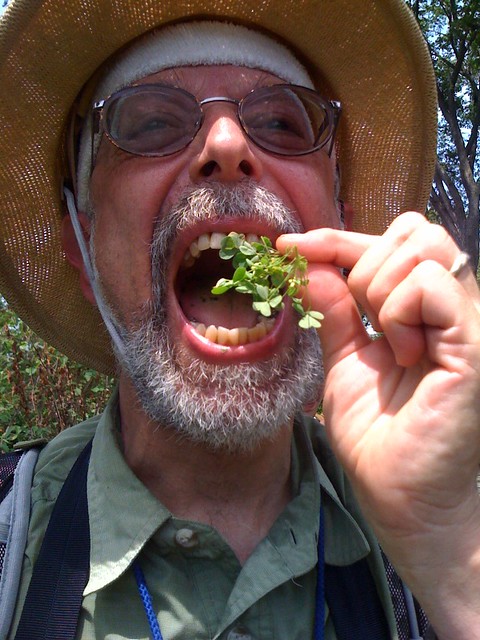
Here’s a list of plants we came across in and around 103rd Street and Central Park West:
1. European Cut-leaf Blackberries – I was so surprised to see a fruit tree in the park! Now that I know where they are, I’ll just pick these in season.
2. Native Black Cherries – I took home a lot of these using the plastic take-out containers we were advised to bring. A subtle ice cream was made at home afterward.
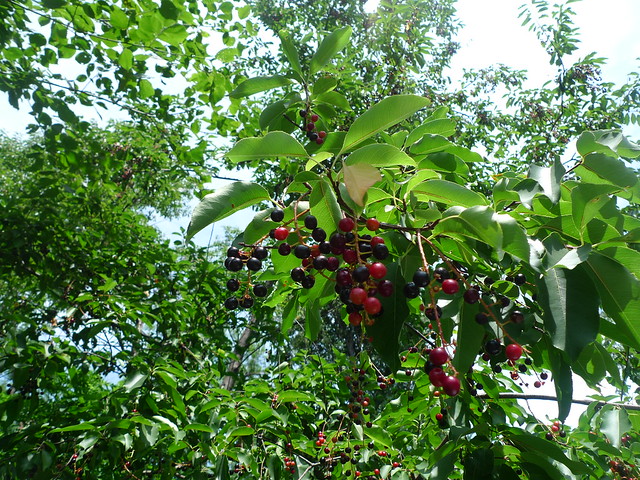
3. Epazote – You can dry and save these for use in a Mexican dish
4. Lamb’s Quarters – You can use them in quiche or cook them like you would spinach
5. Poor Man’s Pepper – They tasted like mustard seeds and Wildman said they would be great in miso soup
6. Wood Sorrel – You’ve seen these growing like weeds and you thought that you could find a four-leaf clover among them. You won’t.
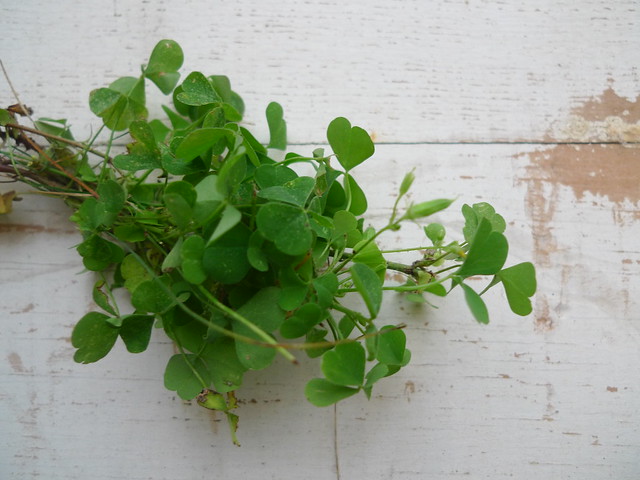
7. Mayapple – Wildman crossed a fence and picked these small plums that taste like passionfruits
8. Common Plantain – These are also everywhere in the park. I’ve always thought they were just some kind of weed, but you can mash the leaves and rub them all over yourself to keep the mosquitoes off. The small seeds had a hint of peanut taste.
9. Garlic Mustard – The plant that keeps on giving: you can use the leaves for a garlic pesto, the buds and the sprouts like chives, the roots like horseradish, the seeds like mustard seeds!
10. Jetberries – I see these all the time, too, and now I know that if a berry bush has some sharp and ragged-edged leaves, they are poisonous!
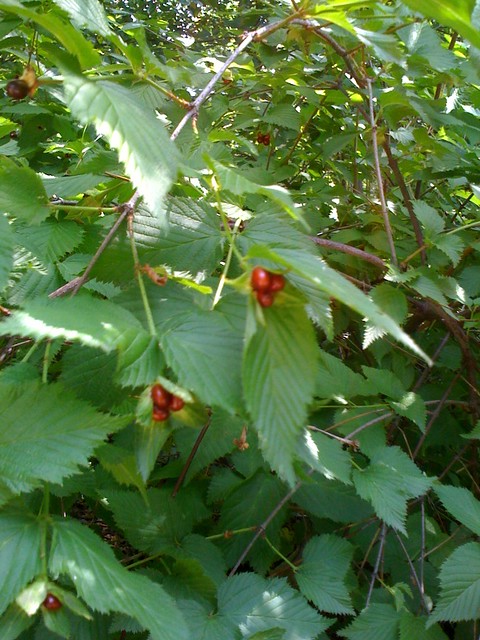
11. Asiatic Dayflower – They look like tiny string beans
12. Field Garlic – I was very happy to see garlic even though we only found one whole bulb because it’s way past spring. They’re definitely stronger than your grocery store garlic bulbs.
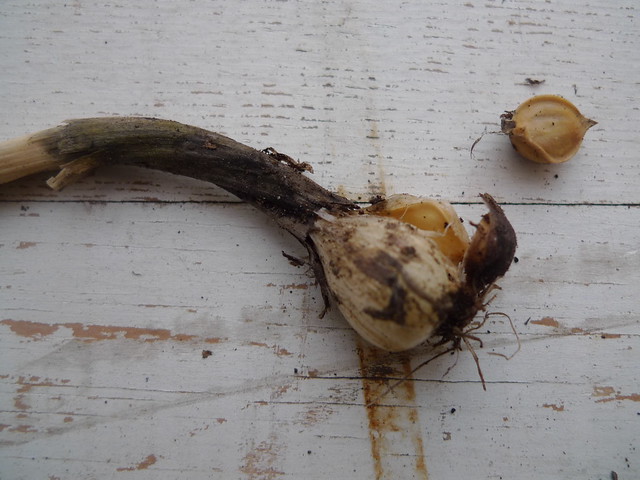
13. Poison Ivy – We spotted a few plants around the park which took me by surprise because dog owners may be walking their pets along the paths not knowing they’re sniffing them! Now I know how to tell them apart: they have three leaves per stalk, but the smaller two connect directly to the twig.

14. Sasafras – Commonly known as the plant that makes root beer, Wildman Steve showed us the leaves in three different shapes.

15. Fawn Mushroom – Fortunately, we found one mushroom by some tree. Unfortunately, a squirrel got to it before we did. Fawn mushrooms grow on wood, have blush-pink gills and have a space in between their gills and stem. If you want to see more mushrooms, sign up for the tour after a whole lot of rain.
16. Jewelweed – Wildman Steve sprinkled some water onto their leaves and the droplets repelled and looked like jewels, hence the name. They are known to help your poison ivy rash, so grab some of these after you step on the ivy plants during the tour.
17. Sweet Pepper Bush – You can rub and juice the hell out of them to make your own soap
18. Lemon Verbana relative – We couldn’t identify the plant that grew along the running water near the Lasker Pool. It had a somewhat citrus smell, but it wasn’t mint because it wasn’t minty enough, nor was it lemon verbana because it didn’t have pointy leaves. Can you help?
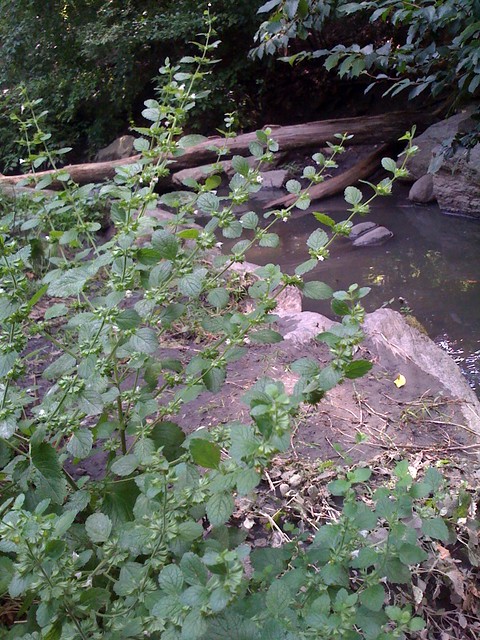
19. Burdock – I first had burdock at The Tasting Room. I miss that place. They were cooking farm-to-table style years before every blogger started using that term.
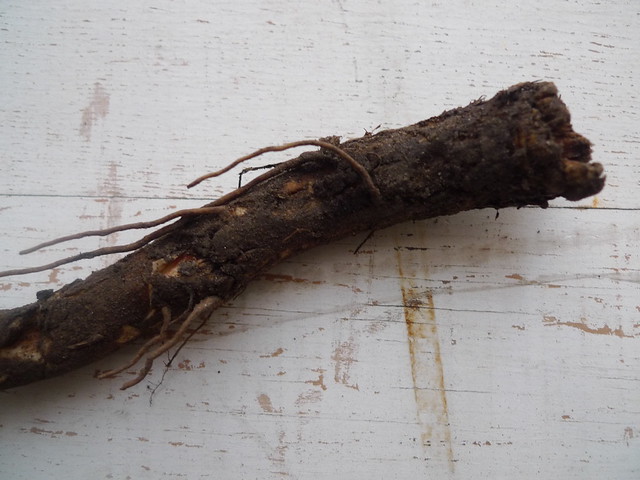
Although you won’t be on your hands or knees during the foraging trip, I highly recommend bringing a knife. I have a sample of the Ikon Folding Gentleman’s knife from the generous people at Wüsthof and I love it. It’s small enough to pack, yet very hefty and reliable when you’re cutting and slicing tougher items like burdock. Folding it back in takes a little getting used to–something my gentleman had to teach me to avoid accidentally cutting myself–but as soon as I got the hang of it, it was easy to reveal the 5-inch knife and fold back into the smooth Blackwood ebony handle.

Related post/s:
Wildman Steve Foraging photos on Flickr
A 2003 review of The Tasting Room
Recommended tool/s:
Sign up for a foraging tour with Wildman Steve
Williams-Sonoma sells the Ikon Folding Gentleman’s Knife






